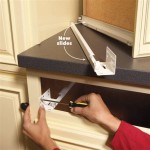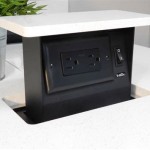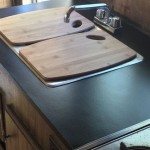Essential Aspects of Choosing the Right Cleaner for Kitchen Cabinets
Maintaining clean kitchen cabinets is essential for both aesthetics and hygiene. Selecting the appropriate cleaner is crucial to ensure effective cleaning without damaging the cabinet finishes. Here are some key aspects to consider when choosing a cleaner for your kitchen cabinets:
1. Cabinet Material
Different cabinet materials require specific cleaning approaches. Laminates are durable and resistant to most cleaners, while wood finishes need gentle products to avoid fading or warping. Painted surfaces may be more delicate, so non-abrasive cleaners are essential. Consider the manufacturer's recommendations for each type of material to avoid any potential damage.
2. Type of Dirt and Grime
The cleaning solution should match the type of dirt. Grease and food spills require strong degreasers, while dust and general dirt can be tackled with milder cleaners. Heavy-duty products may be necessary for stubborn stains, but always test them on an inconspicuous area first.
3. Cleaning Frequency
How often you clean your cabinets will influence the cleaner's strength. For daily or weekly cleaning, a gentle all-purpose cleaner or mild dish soap solution may suffice. If you clean less frequently, a more concentrated cleaner may be required. Regular cleaning prevents dirt buildup and makes cleaning easier in the long run.
4. Spray or Wipe Application
Spray cleaners are convenient for reaching corners and crevices, while wipe-on cleaners allow for more control and targeted application. Both methods can be effective, choose the one that best suits your cleaning habits and cabinet accessibility.
5. Finishes and Textures
Glossy finishes require a cleaner that won't leave streaks or residue. Matte or textured surfaces may benefit from a cleaner with a slightly abrasive texture to remove stubborn dirt. Always follow the grain direction of the wood to avoid scratches.
6. Environment and Safety
Consider eco-friendly cleaners made with plant-based ingredients to minimize environmental impact. Avoid abrasive cleaners containing harsh chemicals that could damage finishes or pose health risks. Use gloves and proper ventilation when using any cleaning products to protect your hands and respiratory system.
7. Manufacturer's Recommendations
Refer to the manufacturer's instructions for your specific cabinets. They may provide specific cleaning guidelines to ensure proper maintenance and prevent damage. Following these guidelines helps extend the life and beauty of your kitchen cabinets.
By considering these essential aspects, you can choose the right cleaner that effectively cleans your kitchen cabinets without compromising their appearance or functionality. Regular cleaning and proper care will ensure that your cabinets remain a beautiful and functional part of your kitchen for years to come.

How To Deep Clean Kitchen Cabinets And Keep Them Looking Gorgeous Everyday Skate

How To Clean Kitchen Cabinets 9 Basics Bob Vila

Kitchen Cabinet Cleaning Tips For Stained Or Painted Cabinets

Ultimate Guide To Cleaning Kitchen Cabinets Cupboards Foodal

How To Clean Kitchen Cabinets Dianella Polishing

How To Clean Your Kitchen Cabinets

Kitchen Cleaning Checklist Weiman

How To Clean White Kitchen Cabinets 3 Best Ways Avoid Abbotts At Home

How To Clean Sticky Grease Off Kitchen Cabinets

How To Clean Kitchen Cabinet Doors
Related Posts








